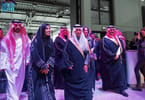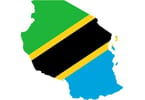Folk music and dancing are wonderful expressions of a country’s rich tradition and diverse culture although very rarely would one pay attention to them. Many folk musicians across the country struggle to keep their traditions alive in the face of falling numbers, and due to lack of incentives and recognition from society, modern-day folk musicians have to engage in preserving these arts while struggling for their own survival.
With the objective of bringing these unique Sri Lankan folk and traditional music and dance forms into the limelight, Sewalanka Foundation together with Concerts Norway and Norwegian Embassy will present Jaffna Music Festival, a folk themed event from March 25-27, 2011 in the city of Jaffna. The festival unfolds in a folk-village camp setting, where different artists, both local and international, will lead simultaneous performances on 3-4 stages from Friday to Sunday, 10:00 am to 3:00 pm, followed by a main-stage performance from 4:00 pm to 10:00 pm daily.
The festival will bring together an assortment of traditional folk music and dance performances from across the island, with groups representing all ethnic groups. With a combination of folk, fusion folk, and traditional music, the festival will present an exciting lineup of 23 Sri Lankan and 5 international folk groups from India, Nepal, Palestine, South Africa, and Norway. Some of which are:
Nishantha Rampitiye Troupe: Kohomba Kankariya
In Kandy, where Kohomba Kankariya evolved, the Nishan Rampitiye family line has been performing this art for generations. Well known for Kohomba Kankariya and Bali, the group has around 50 performing artists. It takes nearly 5 years or more to arrange a full Kohomba Kankariya performance – the most difficult point is to scour the professional dancers who know the procedures well and the Kankariya itself.
The Khohomba Kankariya contains a number of episodes around an incident. Kohomba Kankariya ritual is performed to ensure freedom from diseases, invoke blessings, and for the people to live in prosperity. The blessings are expected to manifest only in the location that Kohomba Kankariya is enacted, so that if any others want such blessings, they too are compelled to enact Kohomba Kankariya in their own areas, thereby ensuring more people would make offerings to please the “Yakka” (devil) separately for their well-being!
The academy is very proud to win national and international level awards and the Presidential Award for “Skillfull Wes Natum Artist of 2009–2010.”
Tradition and Culture of Muslim Inducing Association (TACOMIA): Kali Kambattam
The members of TACOMIA live in Akkareipattu, on the eastern coast of Sri Lanka. The group is well known among the Muslim community for their distinctive style of performing music with sticks. This style is known as “Kali Kambattam,” which refers to “beat and play.” The knowledge and art of performing the play are handed down in traditional families to the present generation.
The roots of their play style can be traced back to about 300 years ago. This tradition is very popular in every Muslim community. The band over the years has played more than 30 shows to wide and varied audiences around the country.
The group performs a wide variety of folk tales in form of singing and dancing with sticks. The folk group’s play, singing, and dancing style is Saudi Arabian in origin. This scenario forms the base, and all surrounding sequences are acted in various manner using diverse symbols and costumes, accompanied by rhythmic singing and drumming with sticks.
According to MH Musamil, leader of the group, the younger generation in the Eastern coast shows a big interest in joining the group and learning this unique tradition.
Papurabah Koothu-Chulipuram
This is one of the Koothu practiced among Tamils in the Chulipuram area. It is now going to be performed again after nearly twenty year. The story of Papurabaha is connected to the legend Mahabharata.
Papravaham goes on to tell the story of the great fight between father and son, Arjuna the great archer, in the epic Mahabharath and Papravahan, who captured a horse his father released during a Yaga (offering to the gods). Paravahan wins the battle killing his father, but ultimately due to the intervention of the gods, Arjuna is revived back to life.
The men perform to the sound of the thalam ringing with an annaviyar singing, backed by sallari and mathalam. The performance usually takes place in a circular space in the kovil compound. The audience is seated on the three sides of the performing space. The performers do not use modern facilities such as loudspeaker. This koothu is performed only during the temple periods.
Almost a century ago, it was said that real horses and elephants were brought in during the performance to add grandeur to the performance.
Indian Group
The Manganiar Group is known for their traditional Indian folk music and seen as some of the most sophisticated musicians of the Western Rajasthan. The folk music group comes from the district of Barmer in Rajastan, also called the land of kings and famous for their folk music and generations of professional musicians. They are seen as the descendants of the Rajputs – the Kings of Rajasthan, in the way that their songs are passed on from generation to generation, making them effectively keepers of the history of the desert. Their songs are about all parts of life – love, weddings, birth, or any family festivity. Among the instruments they play, is the remarkable bowed instrument the “kamayacha,” with its big, circular resonator, giving out an impressive deep, booming sound.






















